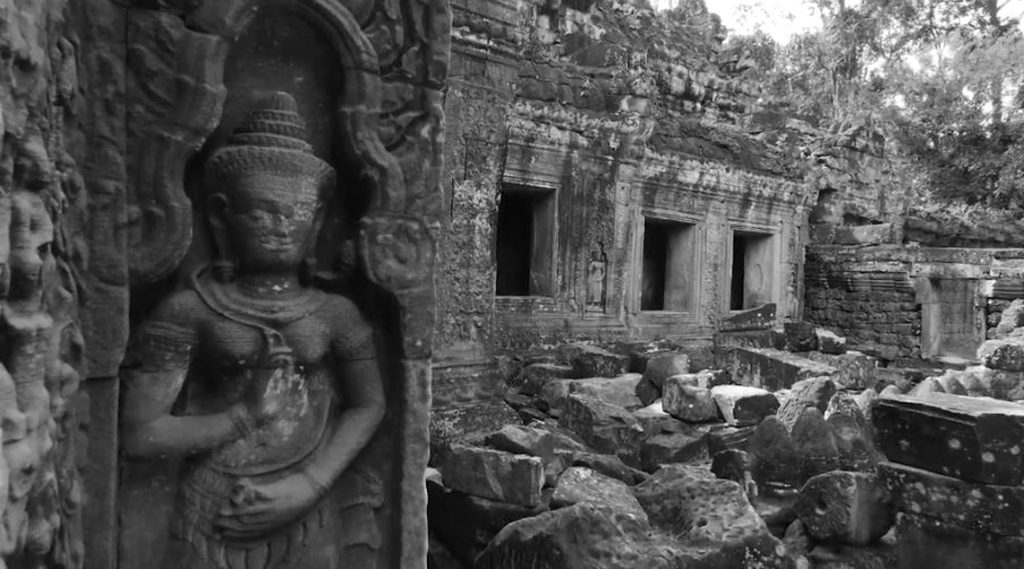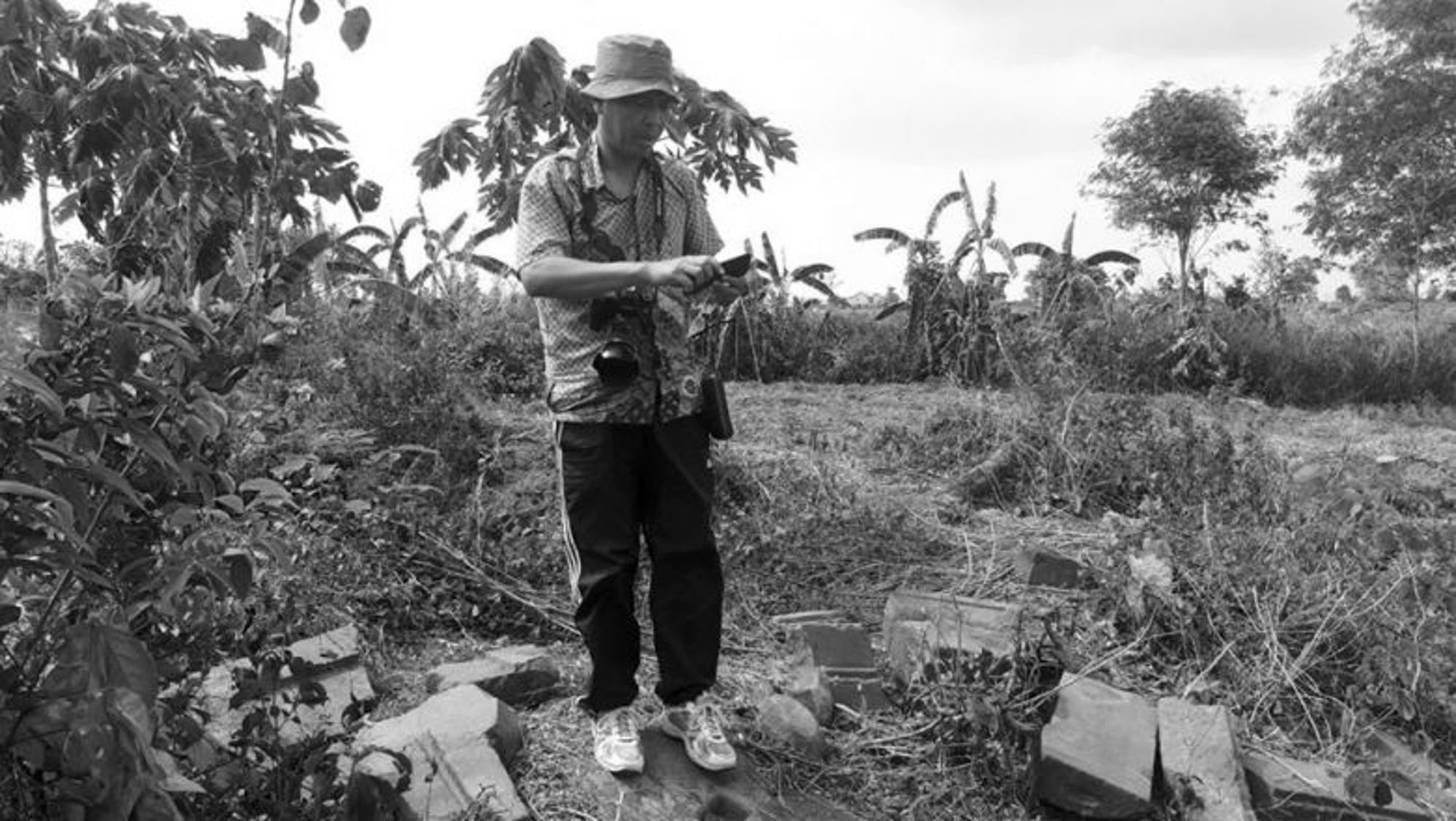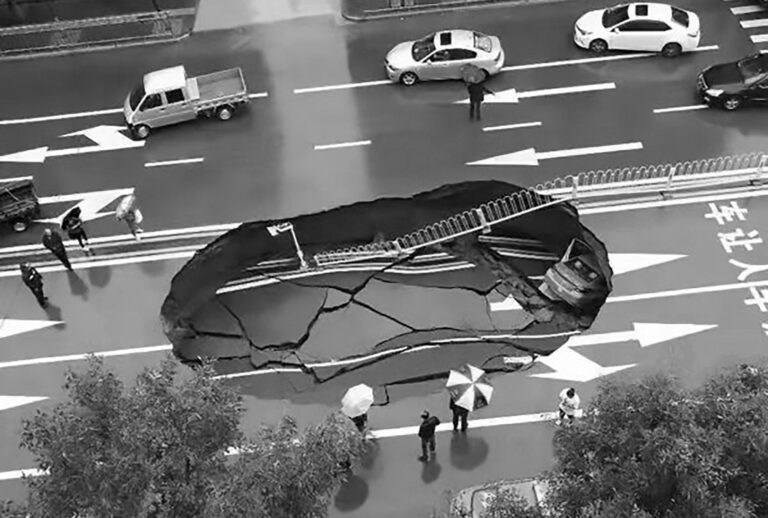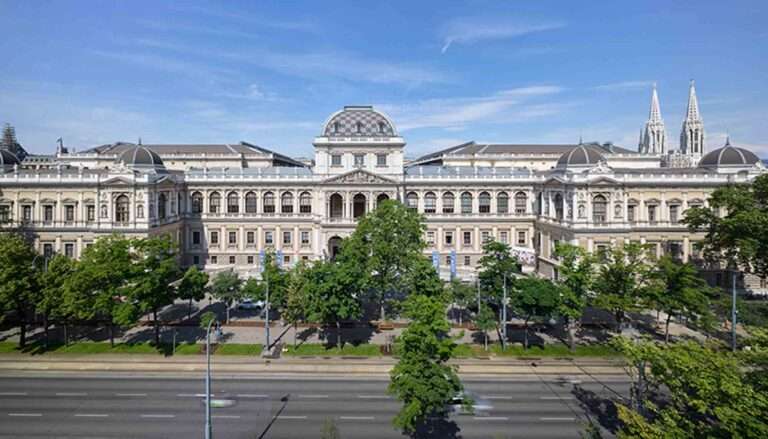Archaeologists say they have discovered the remains of nearly 100 previously undiscovered ancient temples in the jungles of Cambodia.
The temples are hundreds of years older than the country’s world-famous Angkor Wat temple complex, although in many cases little more than foundations remain.
Dating back to the sixth and seventh centuries, the newly discovered temples were found in the historical Samphu Borak area of eastern Cambodia’s Kratie Province.
The area, along the Mekong River, was one of the most densely populated regions of the pre-Angkorian era of Cambodia.
Historically known as Chenla, the region had previously been known as the Kingdom of Funan and went on to become part of the Khmer Empire.
Thuy Chanthourn, deputy director of the Institute of Arts and Culture of the Royal Academy of Cambodia, said the remains of the temples had not been recorded in earlier studies, by either French or Cambodian archaeologists.

They were not mentioned in the definitive study of the area, by the French soldier and archaeologist Etienne Lunet de Lajonquiere, and were not in the Ministry of Culture and Fine Arts’ list of ancient temples.
Mr Chanthourn said: “I have found nearly 100 temples that have not been unearthed before. We will carry out further inspections and studies.”
Alison Carter from the Anthropology Dept at the University of Oregon, who is a director of P’teah Cambodia, researching ancient ruins, told Asia Wire: “I think when we hear “temple sites” people think of Angkor Wat or Ta Prohm, but in fact many Angkorian and especially Pre-Angkorian temple sites were quite small, perhaps a single small tower that frequently isn’t standing any longer and so it’s not surprising that they would be so many unrecorded sites.”
She said that despite extensive efforts to find sites some 10 years ago, smaller sites like those now uncovered are easily missed.
She added: “It’s great that Cambodian archaeologists are doing this work, because having a careful record of sites is an important first step for their protection and study.
“Everyone focuses on the places in Cambodia where there is standing architecture (e.g. Angkor, Sambor Prei Kuk, etc.) but finding so many sites in other parts of the country demonstrates that other parts of Cambodia were occupied in the past and are important places.
“Compared to the Angkorian period, we don’t know very much about the Pre-Angkorian period (6th-7th centuries). Any new information like this helps us complete a more holistic picture of the past.”
The sandstone temples are believed to have been built by followers of the early Hindu religion of Brahmanism.
Mr Chanthourn’s team now plan to use GPS technology to carry out in-depth research into the temples and to record and preserve them in more detail.
He added that part of the work would involve educating local people about the significance of ancient sites.
“Local people in the past have dug at the foundations of the temples looking for statues and other valuable relics to sell,” Mr Chanthourn said.
The archaeologists found the temple remains during a Royal Academy of Cambodia project to study the Chenla civilisation.
It had also taken them to other locations in Cambodia, including the provinces of Mondulkiri, Ratanakkiri, Kampong Thom and Kampong Cham, as well as Vietnam and Laos.
Cambodia is famous for Angkor Wat, a huge complex of more than 1,000 temples dating back to the early 12th century, near the modern-day city of Siem Reap.
To find out more about the author, editor or agency that supplied this story – please click below.
Story By: Simon Glover, Sub-Editor: Michael Leidig, Agency: Asia Wire Report




